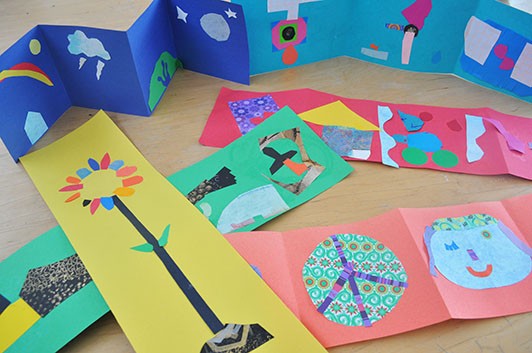Paper Trails of Paper Tales
Ever wonder how we have a wide variety of collage papers for guests to use in the Art Studio? Curious about how the Art Studio stays sustainable with all our paper projects? Then this blog post is for you! In preparation for the most recent Every Day Art Project (EAP) Paper Tales, we pulled out our collage paper bins in the office and were struck by how each piece in the bin had a story. One piece was from a previous display, another from a recycling bin, another from packing material. And while we are happy to chat with people in person about our collage paper collection, we realize that a lot of you are from afar or did not get the chance to chat! So collected below we have some of the myriad of ways we reuse paper within the Art Studio to make our collage papers.
In this EAP, we used collage papers, glue, and scissors to tell wordless stories, inspired by the exhibition David Wiesner: The Art of Wordless Storytelling. Below is an image of the typical table set-up.
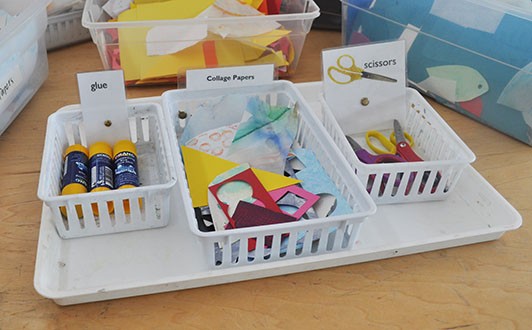
In each collage paper basket, there is a pile of collage papers with an inviting mixture of colors, shapes, and textures. And believe it or not, every single piece has been recycled from a previous project. We are fortunate to have a wonderful Art Studio team that helps us cut down the projects into reusable pieces but whether or not you have helpers and/or space to hold the paper bins, I hope this post helps you see the collage potential in often-overlooked papers!
One way we reuse papers are from displays. Whenever we take down a display, we cut collage-sized pieces out of it so it can have a second life in a project. The image below shows pieces from our Brown Bear Turns 50 Endpaper Display Wall, the hallway display case background for our Silly Puppet People EAP, the watercolored display wall for a Special Sunday, and the Sky Mobiles display wall.
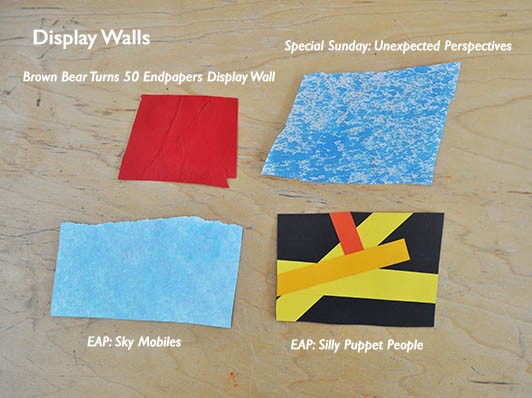
Other sources of paper comes from rescuing paper from the recycling bin. We cut out solid-colored pieces from outdated magazines, cut up wrapping paper from the holiday season, cut down the packing materials that our art supplies are shipped in, and even papers that we use to test our materials. Anything with a texture, striking color, or other visual potential is saved and cut into manageable sizes.
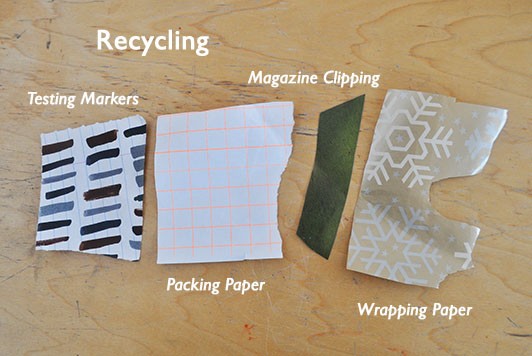
We are constantly on the lookout for ways to save our materials and even after an EAP, we cut down the left-over artwork after a two day waiting period. Below is an image of left-over artwork that was repurposed for collage. Each EAP, for example Sea…What Can You See? and Lines that Hop, Skip, and Jump as seen below, create a multitude of unclaimed artwork that gets recycled into the next collage project.
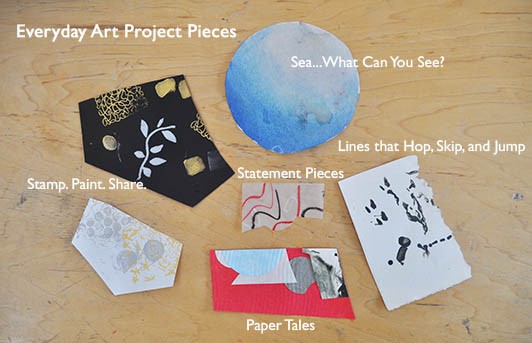
We do the same for all our other programs, including Materials Play and Open Book, Open Play. This gives each artwork a second life after its initial creation, allowing others to enjoy the variety of colors and artmaking techniques that were used before to create their own individual artwork. The image below has a piece from a watercolor pencil experimentation (which was actually another reuse of a display wall for an EAP), a shaving cream foamy paint experimentation, and a painting with trucks experimentation that we added rubbing plate texture to add more color.
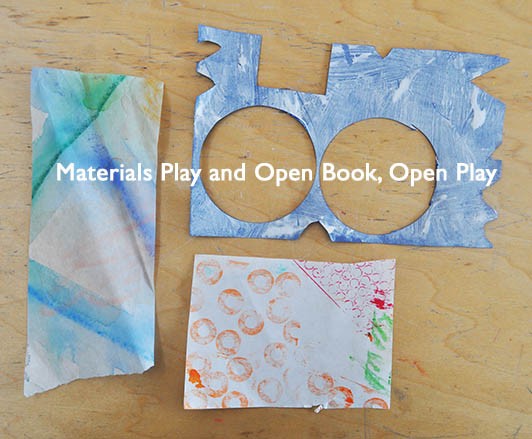
Below are even more pieces from special programs within The Museum including papers we had over-prepped for our guided school group project during the Brown Bear Turns 50 exhibition, scraps from the adult art course Create at The Carle! that focused on collage, a collaborative wearable art activity at the ColorFest! at Springfield Museums this past spring, and watercolored leaves from a pop-up Art Studio project that involved making tissue paper flowers for others in honor of World Kindness Day.
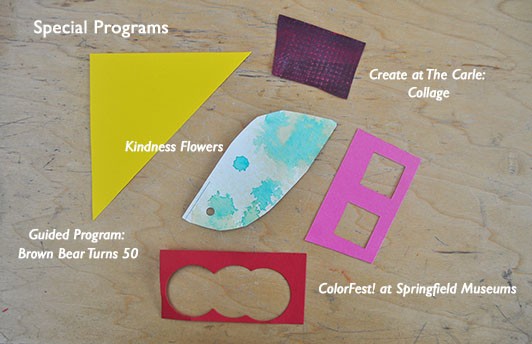
So when people ask us where we get our supplies for collage, we can proudly say that we sustainably source our materials from previous projects. Whether we are saving it from a recycling bin or using up materials from a previously over-prepped project, we are always looking for ways to reduce, reuse, and recycle our way into a sustainable Art Studio. It is always a treat to see how each of these pieces are then given a second life in a story or picture.
